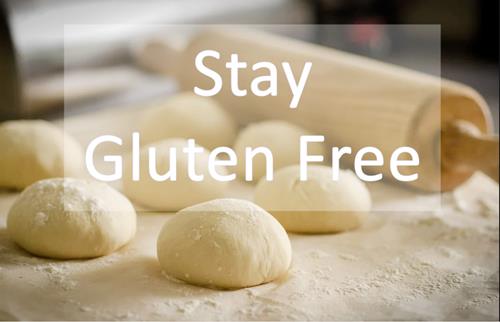Living a Gluten-Free Life
Gluten-related disorders and a gluten-free diet
Fact Checked
×All the content published in our website is fact checked to validate its accuracy.
Visit our guidelines web page to learn more about our strict processes regarding how we review our content's sources: reliable and reputable journals, media websites, universities, colleges, organizations, and professionals.
Our articles are based on scientific evidence, and the references are included in its footnotes, which are clickable links to sound scientific papers.
First published: 01. Jan.2021
Overview
I suffer from Celiac Disease
I know what it's like to live a gluten-free life
I was diagnosed with Celiac Disease (CD) when I was 55 years old. It came as an unpleasant surprise because I adore flour! Pizza, bread, pastry, cookies, biscuits, cakes, and pasta.
And all of a sudden, I learned that I could no longer eat them! No more crispy croissants or warm, crusty French baguettes.
I went through all five stages of loss, I had lost my favorite foods! I lived in fear of cross-contamination, I could no longer eat out! Fast food, and takeaways were no longer an option. I felt angry and frustrated.
Finally, the process of grieving helped me live with my loss, and I learned that life is great and that I can still eat great meals (including pizza, pasta, bread, and pastry) without any gluten.
In Fit-and-Well's gluten-free life section, I want to share resources on coping with a gluten-free life, so that you too, can learn to live without gluten.
References and Further Reading
(1) Hossein Akhondi, Albert B. Ross, (2020). Gluten And Associated Medical Problems. StatPearls Publishing; . July 6, 2020. Accessed 09.Jan.2021
(2) A. Whittall, (2020). Hidden Gluten Sources That May Surprise You. The Wellness Universe, Oct. 23, 2020.
(3) Serena, G., D'Avino, P., and Fasano, A. (2020). Celiac Disease and Non-celiac Wheat Sensitivity: State of Art of Non-dietary Therapies. Frontiers in nutrition, 7, 152. https://doi.org/10.3389/fnut.2020.00152
(4) National Institute of Diabetes and Digestive and Kidney Diseases (NIDDK), Celiac Disease. Accessed 09.Jan.2021
(5) Cha RR, Kim HJ., (2020). Non-celiac Gluten Sensitivity. Korean J Gastroenterol. 2020 Jan 25;75(1):11-16. Korean. doi: 10.4166/kjg.2020.75.1.11.
(6) Shahbazkhani B, et al. (2020). Prevalence of Non-Celiac Gluten Sensitivity in Patients with Refractory Functional Dyspepsia: a Randomized Double-blind Placebo Controlled Trial. Sci Rep. 2020 Feb 12;10(1):2401. doi: 10.1038/s41598-020-59532-z.
(7) Eosinophilic Disorders - Also called: Eosinophilia. Medline Plus, NIH U.S. National Library of Medicine. Accessed 09.Jan.2021
(8) Iain D Croall, Nick Trott et al., (2019). A Population Survey of Dietary Attitudes towards Gluten, Nutrients 2019, 11, 1276; doi:10.3390/nu11061276
(9) Rebecca Riffkin, (2015), One in Five Americans Include Gluten-Free Foods in Diet, Gallup, Wellbeing, July 23, 2015. Accessed 09.Jan.2021.
(10) Niall McCarthy, (2017), The Number Of Americans Going Gluten-Free Has Tripled Since 2009, Forbes, Jan 17, 2017. Accessed 09.Jan.2021.
(11) Shah A, Thite P, Hansen T, Kendall BJ, Sanders DS, Morrison M, Jones MP, Holtmann G. (2022), Links between celiac disease and small intestinal bacterial overgrowth: A systematic review and meta-analysis. J Gastroenterol Hepatol. 2022 Oct;37(10):1844-1852. doi: 10.1111/jgh.15920. Epub 2022 Jul 1. PMID: 35734803.
(12) Charlesworth, R. P. G., & Winter, G. (2020), Small intestinal bacterial overgrowth and Celiac disease – coincidence or causation?. Expert Review of Gastroenterology & Hepatology, 14(5), 305–306. https://doi.org/10.1080/17474124.2020.1757428
About this Article
Living a Gluten Free Life, A. Whittall
©2024 Fit-and-Well.com, 09.Jan. 2021. Updated. 11 Oct. 2024. Next Update scheduled for 11 Oct. 2027. https://www.fit-and-well.com/gluten-free-life.html
Tags: gluten, SIBO, celiac, wheat allergy.




